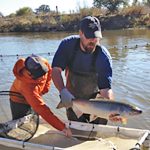Welcome to Monitor Notes, a weekly roundup of news items, event announcements, and updates on past Bay Area Monitor articles.
And the Nominees Are…

We all have gripes about traffic and housing. But instead of complaining, consider giving props to friendly bus drivers or grassroots groups preserving a natural habitat. The Association of Bay Area Governments and Metropolitan Transportation Commission want to recognize these “difference makers” improving mobility, affordability, and harmony. They’re asking residents to nominate projects, people, or programs making the region a better place to live, work, and play — objectives transportation advocates shared in our January edition when urging system integration. Do the honors and click here for “Bay Area Metro Awards” information.
LWCF Looks to Land Funding

The livelihood of the federal Land and Water Conservation Fund (LWCF), which has funded trails, playgrounds, and other public land projects for over 50 years, has been in recent limbo. The fund expired late last week only to be revived by Tuesday when the Senate Energy and Natural Resources Committee approved a bill to permanently reauthorize the fund and ensure it’s fully paid for, per a Washington Post article. The dedicated funding guarantee is a relief locally, since the LWCF (which is supported by offshore drilling revenue) has long provided protections to Bay Area parks and open spaces. Find out which ones in our 2014 article explaining another close funding call the LWCF faced in the past.
Clean Cuts

The California Air Resources Board is loading clean transportation measures. Last week, it announced $205 million in clean freight technology grant funding and approved a 20 percent reduction in fuel “carbon intensity” by 2030. It also took steps to ensure residents can buy and drive cars meeting current clean car standards, even if the U.S. Environmental Protection Agency weakens federal ones. A Next-Gen Transportation article explains these actions, with experts noting a combo of complementary policies is a “best bet” to reduce emissions. So, too, is collaboration, something the Monitor’s Leslie Stewart highlighted in covering the Bay Area’s new Clean Air Plan.
Nurturing Young Salmon

Salmon populations, which once flourished in California, have potential to thrive again amid plans for restoring Central Valley wetlands. That’s according to a recent Estuary News article by the Monitor’s Robin Meadows, who covered salmon spawning site restoration for us last fall. In her new piece, she points out habitat diversity is key to strengthening salmon populations, including a new practice of raising them in rice fields in flood-control bypasses connected to waterways. Cast a line to read about getting the rice field project off the ground and for perspective on strengthening salmon resilience.
Monitor Notes is produced by Cecily O’Connor. To receive it by email, scroll to the bottom of this page, enter your email address in the box under “RECEIVE EMAIL UPDATES,” and click the red “SIGN UP” button.